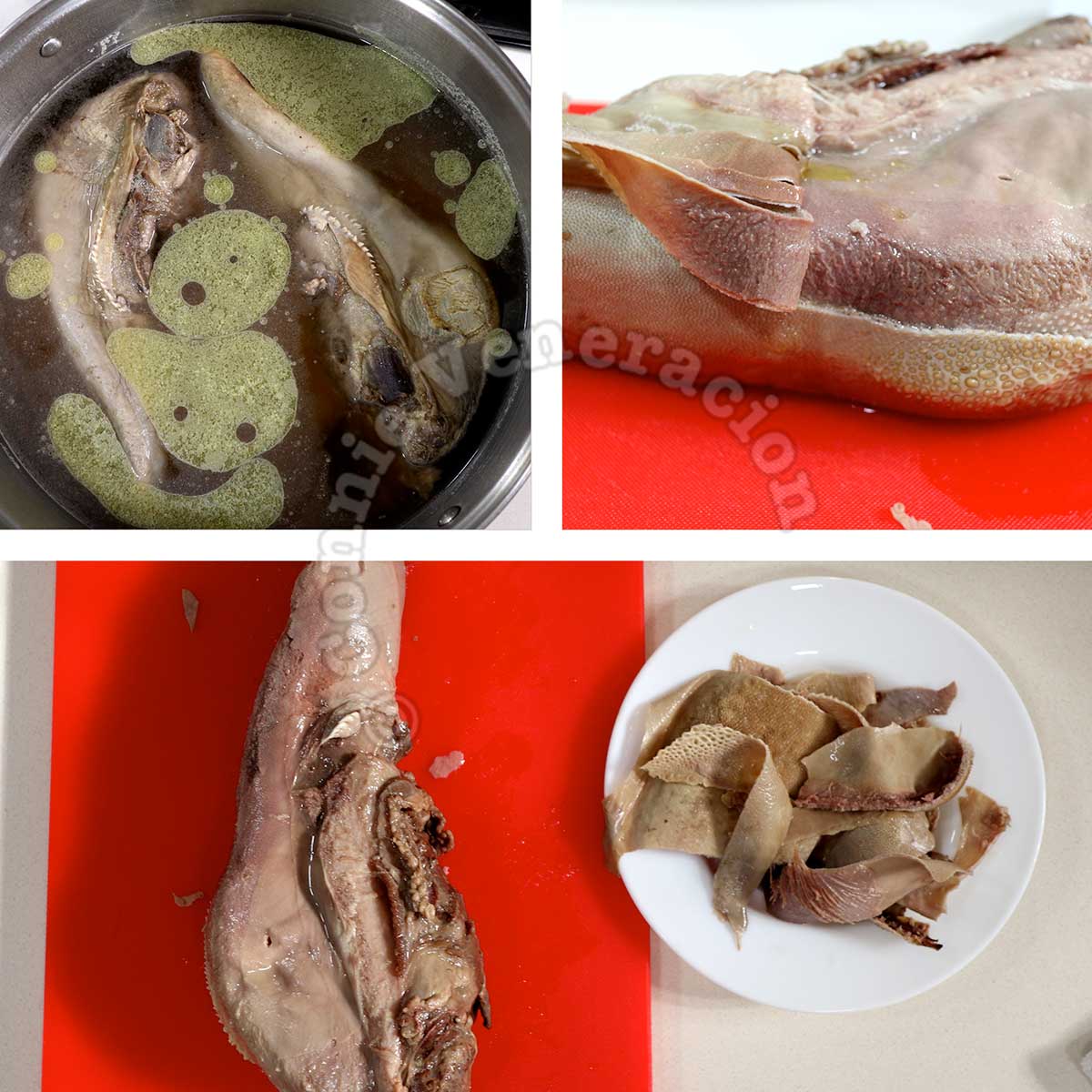Slow Cooked Beef in Cling Film
When cooked properly, beef tongue is very tender. A good cook can bring the level of tenderness to "melt in the mouth". How is that done? Here are tips for buying, prepping and cooking beef tongue.
What is commercially sold as beef tongue or ox tongue comes from the cow. Lengua is the Spanish word for tongue. But why does it say ox tongue in some recipes and beef tongue in others?
The difference between ox and beef tongue
First, let's go into the distinction between an ox and a bull. It appears that in farming, there is a practice that animals not intended for breeding are castrated, especially when the animals are meant to do work like plowing or cart-pulling. Castration gets rid of aggressive and territorial behavior, and it makes farm animals easier to work with.
Ox is a term often used to refer to cattle (male, usually) that has been castrated. Male cattle that has not been castrated is a bull. Whether castrated or not, meat from cattle (the layman term is cow although some insist that "cow" only refers to female cattle) is called beef.
In today's commercial meat production, we know that the tongue we find in the market or grocery, whether labeled as ox tongue or beef tongue, most likely came from an animal that was raised in a farm and intended for slaughter for human consumption. Ergo, the label "beef tongue" is probably more appropriate.
So why not just label them all as beef tongue? The usage of "ox" to label meat is likely a carry over from medieval days when all cattle were both farm workers and source of food. At the time, every male cattle was an ox.
If all that sound far too academic with no practical application for the everyday cook, just remember — when you buy tongue that comes from an animal whose meat is called beef, then, it can either be called ox tongue or beef tongue.
Tips for buying beef tongue
You buy it whole. I haven't encountered any butcher that sells it otherwise. The size of the beef tongue varies depending on the size of the cow it came from. It can be as small as a little over a kilogram or as large as two kilograms. Choose one that's just the right size for the number of people you're serving it to.
If you buy from the market, the tongue often comes with extras that you will need to discard — often, a lot of fat and the esophagus with all the cartilage. Sucks, really, because the price is based on weight and the weight includes all the things you have to get rid of anyway. If you can cajole the butcher, tell him to get rid of all the extras. He'll likely do it — but onlyafter the meat has been weighed and the price determined. At least, you'll have less work to do once you have the tongue in your kitchen.
If you buy tongue from the grocery, you will most likely get a fully "dressed" tongue — nothing to trim, except the skin, prior to cooking. The following prep and cooking tips are for a fully "dressed" tongue. I'm not going to claim that these are universal rules for prepping and cooking beef tongue, but this is how we do it at home.
How to prep beef tongue
When you unpack the tongue, it will feel slimy in your hands. Start by rinsing the tongue and scraping the surface with a dull knife. Do this a couple of times, rinsing well after scraping, to remove as much of the sliminess as possible.
Place the cleaned beef tongue in a deep pot, cover with water and add a tablespoon or two of vinegar (depending on the size of the tongue). Boil vigorously for ten minutes, scoop out and rinse thoroughly.
How to cook beef tongue
Place the parboiled beef tongue in a clean pot, cover with water and add basic seasonings and aromatics. Salt, a whole onion, a couple of garlic cloves, peppercorns and a few bay leaves. Simmer until tender. How long depends on the size of the tongue and the age of the animal.
But why just basic seasonings and aromatics? So that by the time the tongue is cooked, the flavor is still practically a blank canvas. That way, you can finish cooking the tongue any way you like. Braise it, grill it, fry it… And it will go with any sauce or additional seasonings and herbs.
What we do at home is to simmer the beef tongue a day ahead, leave it overnight to cool slowly in its cooking liquid, then peel and cut the meat into whatever size and shape the dish requires.

When beef tongue is cooked to tenderness, removing the skin is easy. Just lift an edge with your fingers, tug gently and the skin will separate from the meat.
Once peeled, the beef tongue can be cooked into a dish. It can also be stored in the fridge, wrapped in cling film, for a day or so and then cooked the way you wish.
Cooking beef tongue in the slow cooker
If your slow cooker is large enough to accomodate a whole beef tongue, use it by all means. Parboil with vinegar as described above, rinse, place in the slow cooker, add water, seasonings and aromatics and cook on HIGH for two hours or until the liquid is bubbling. Set the heat to LOW and cook for another six hours or so.
Scoop out immediately to prevent the tongue from overcooking in the residual heat (it takes a long time for residual heat in the slow cooker to dissipate). Cool the tongue, peel, cut and cook as desired.
Beef / pork tongue recipes
Source: https://umamidays.com/kitchen/is-it-ox-or-beef-tongue-buying-tips-how-to-prep-and-cook/
Post a Comment for "Slow Cooked Beef in Cling Film"